An unexpected turn of events brought me to the Hanseatic city of Lübeck last summer. The city is a Danish favourite due to its close proximity to the country in the northernmost state of Germany, Schleswig-Holstein.
After spending eight days in Stralsund and Rügen with my family, I was supposed to travel solo to the island of Helgoland, but a mix of bus cancellations and no camping spots available left me with no other choice than to postpone the trip (I went in September instead and it was awesome!). So instead of Helgoland, I had to figure out what to do for five days before catching a train to Munich to begin the next part of my German adventure. Having heard people rave about Lübeck, my choice fell on that city. It was convenient since it was on the route that my family was driving to get back home to Denmark, and there would be enough to see and do for five days.
My family dropped me off in Lübeck in the early afternoon, and I spent the rest of the day doing as little as possible. As always when I’m left alone after a great time with people I love, I was feeling down all day. And it didn’t help that the hostel had zero atmosphere and zero other travellers (thank you, pandemic!). But I did go for a long evening stroll which brightened up my mood a little. I discovered a city of gorgeous architecture, cozy narrow streets, green parks and lively riverbanks. I saw a hot air balloon flying over the city and secretly wished I was its passenger. I watched as the sun set over the harbour, telling me it was time to head to bed.
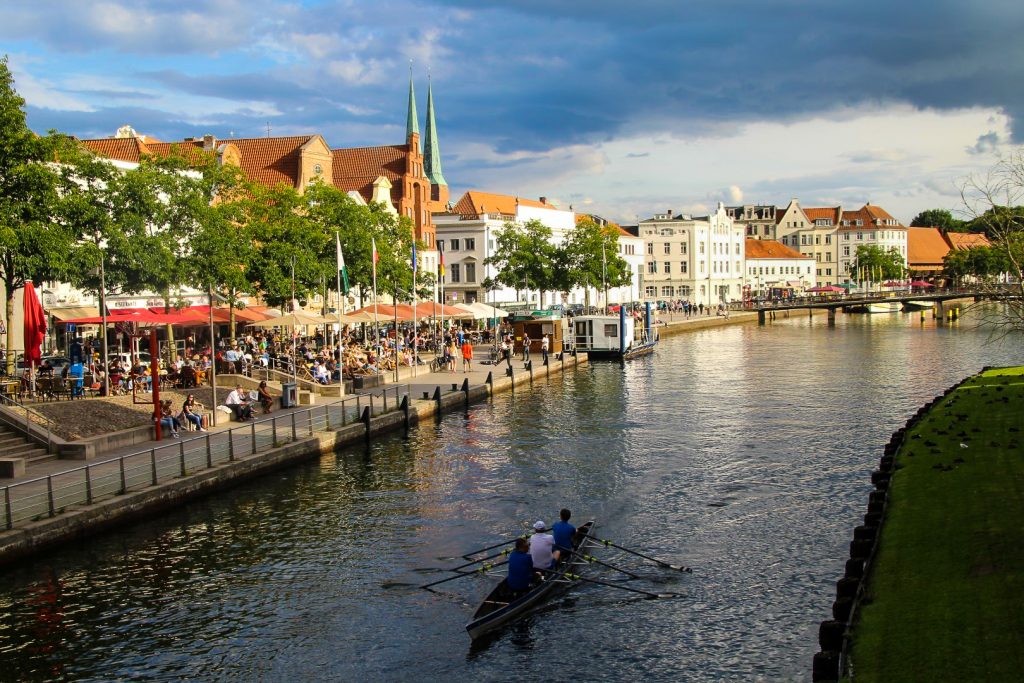
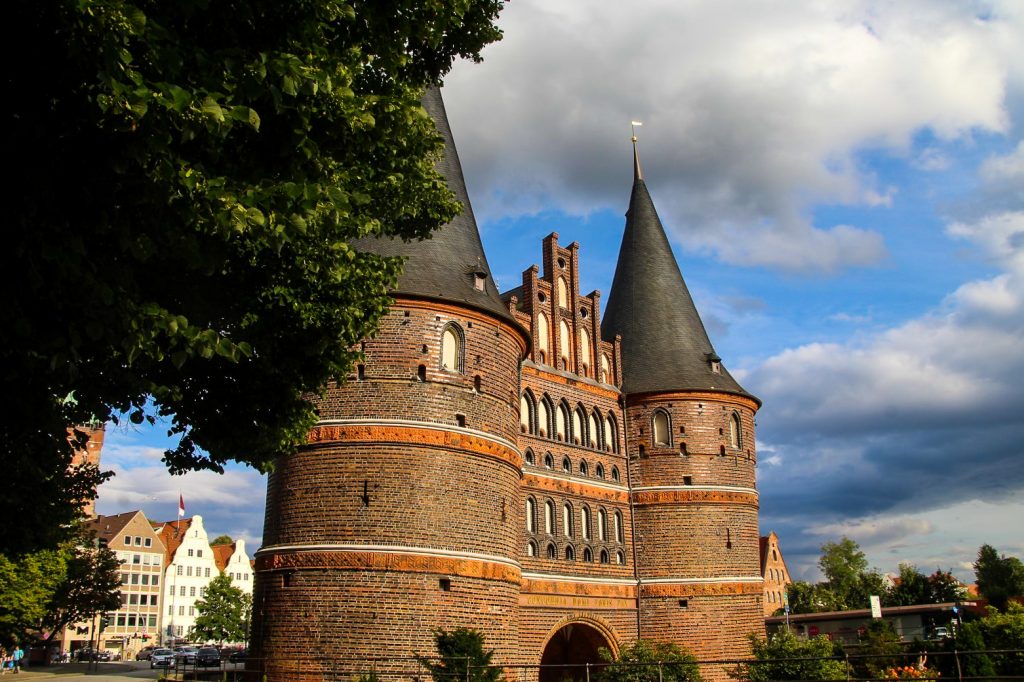
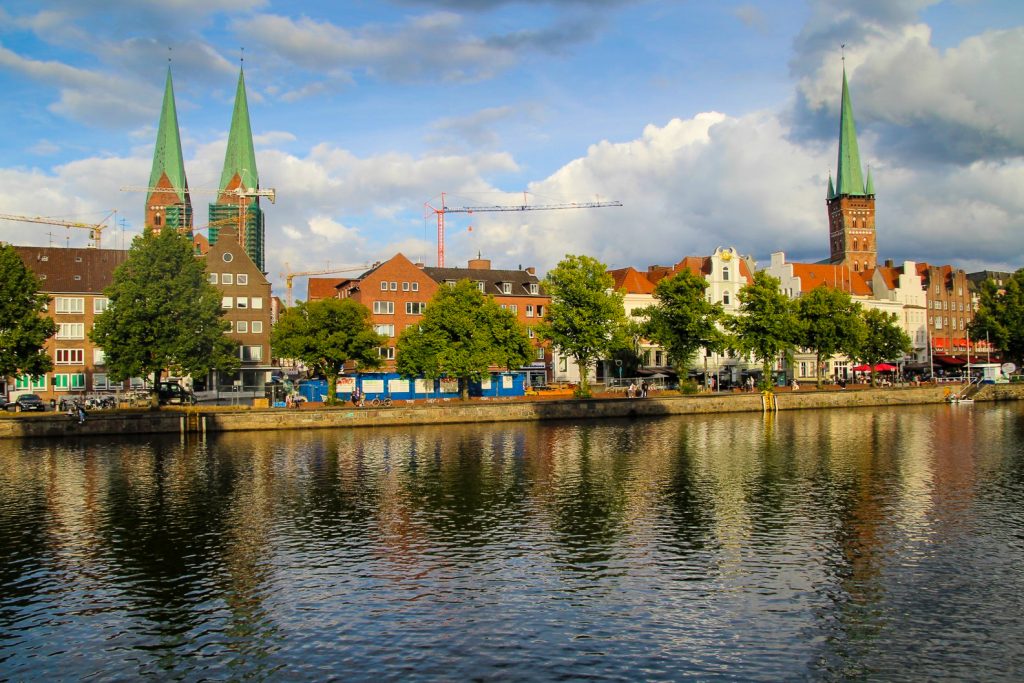
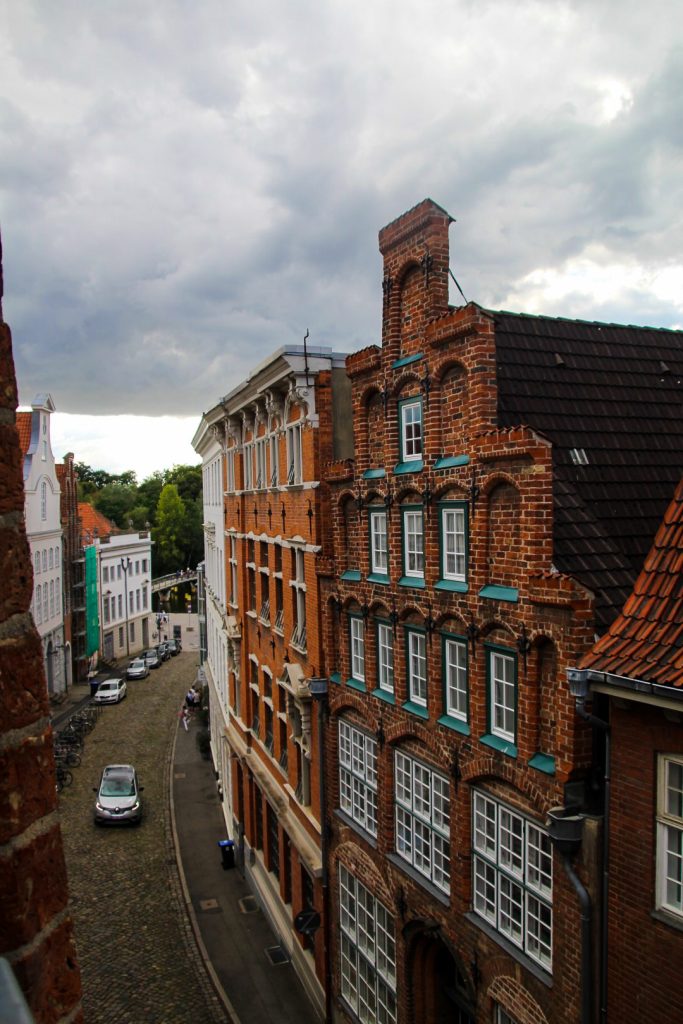
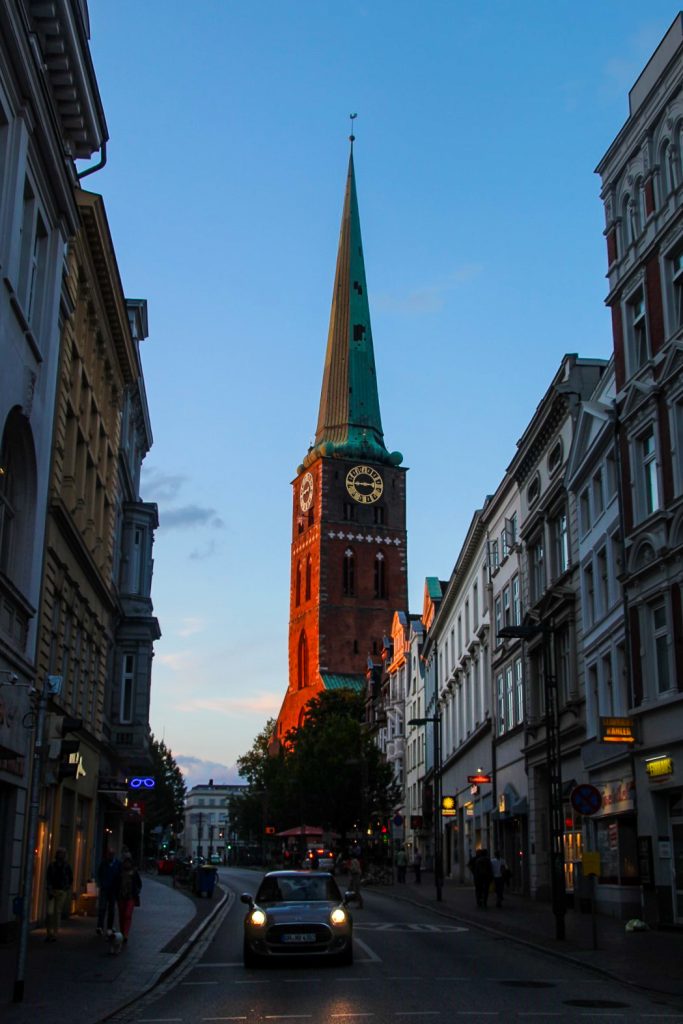

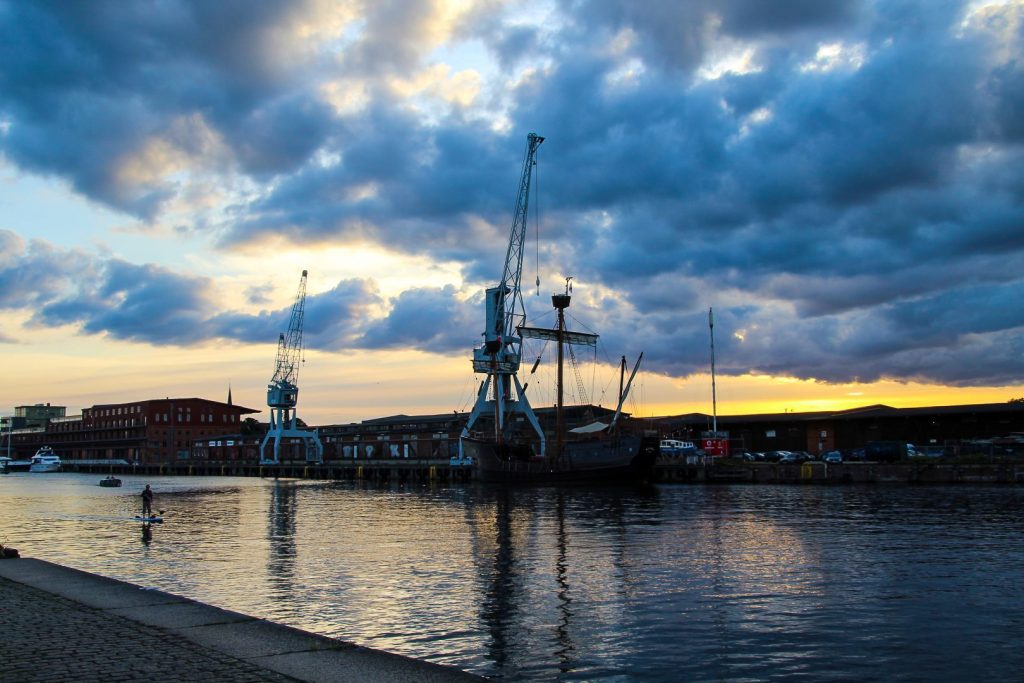
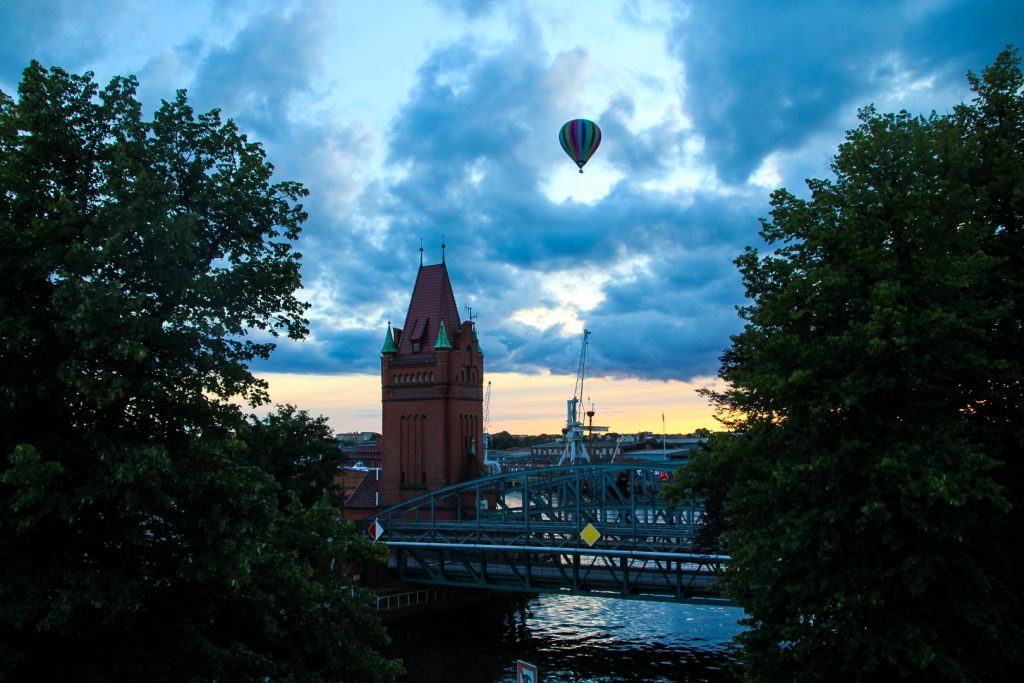
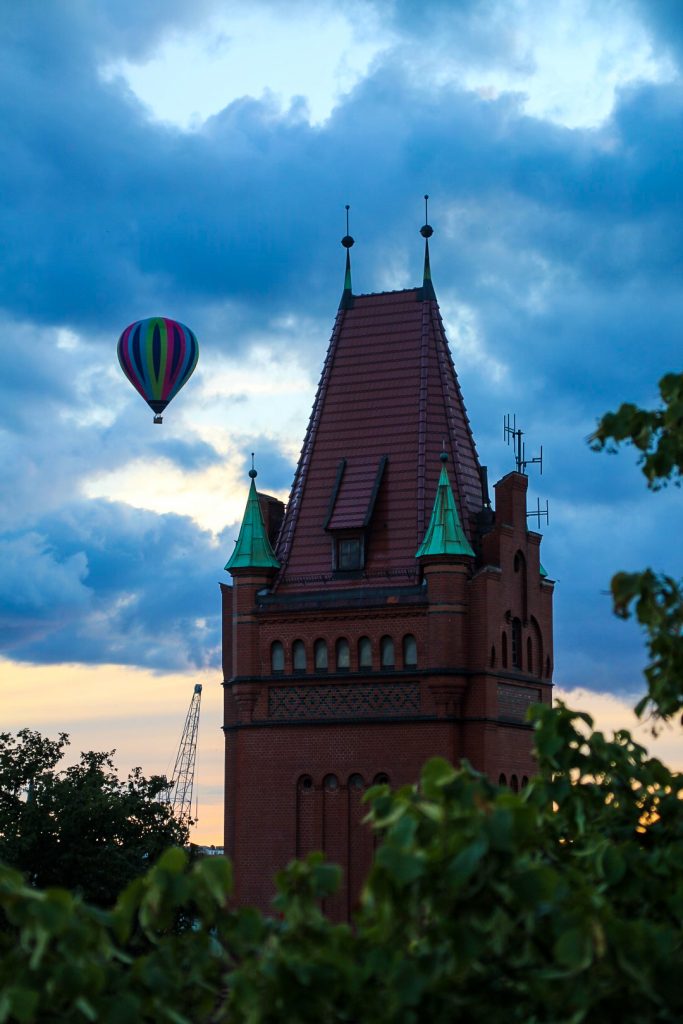

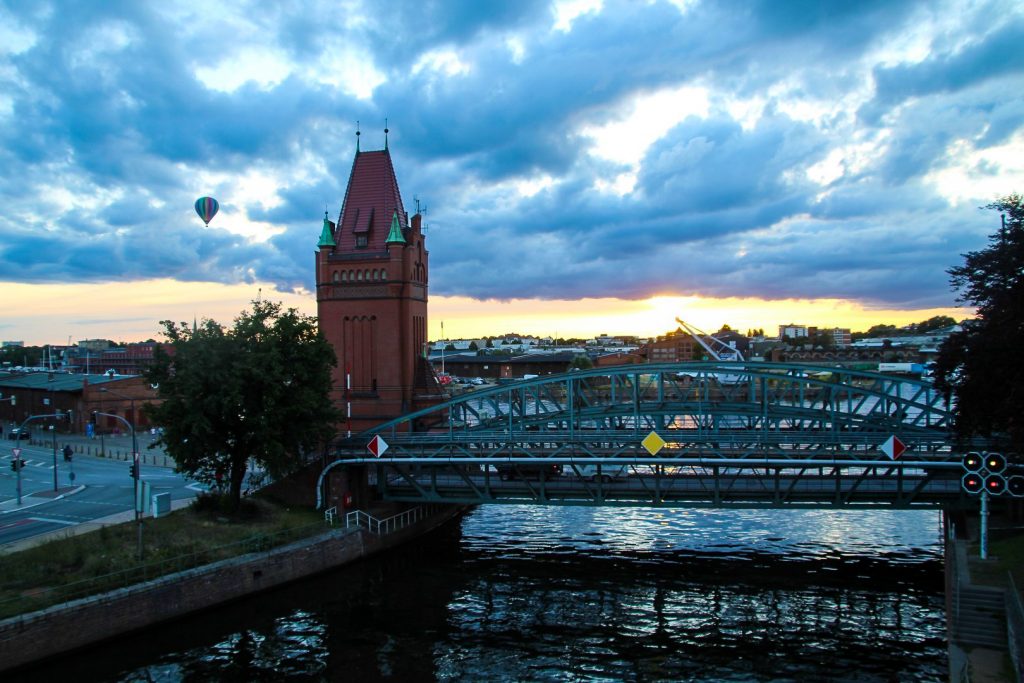

The next morning, I awoke rested and in a much better mood. It was time to explore Lübeck in daylight.
I headed out into the sunshine and walked only a few hundred meters to my first stop. The only good thing about the hostel was its location – smack-bang in the city centre!
I wanted to see the city from above at Petrikirche (St. Peter’s Church) but the queue was enormous so I figured I’d wait for another day. But I never got around to it… I did, however, go on a hunt for the remaining six of Lübeck’s famous seven spires from the city’s five Gothic brick churches. The city centre may be small, but it’s very compact and full of late medieval buildings. Besides the five churches, those buildings include the historic salt storehouses Salzspeicher, and the western city gate, Holstentor, regarded as a symbol of Lübeck. It was built to protect the once wealthy city when it was the capital of the Hanseatic league, an alliance of merchant cities which monopolized the trade in Northern Europe from the 13th to the 15th century.
The entire old city centre is a UNESCO World Heritage Site, and it’s obvious to see why. I spent a while sitting in the small park in front of Holstentor, listening to country music from a street musician, studying the historic buildings in front of me and enjoying my lunch consisting of crispbread and some weird avocado spread I’d found in the local Edeka.
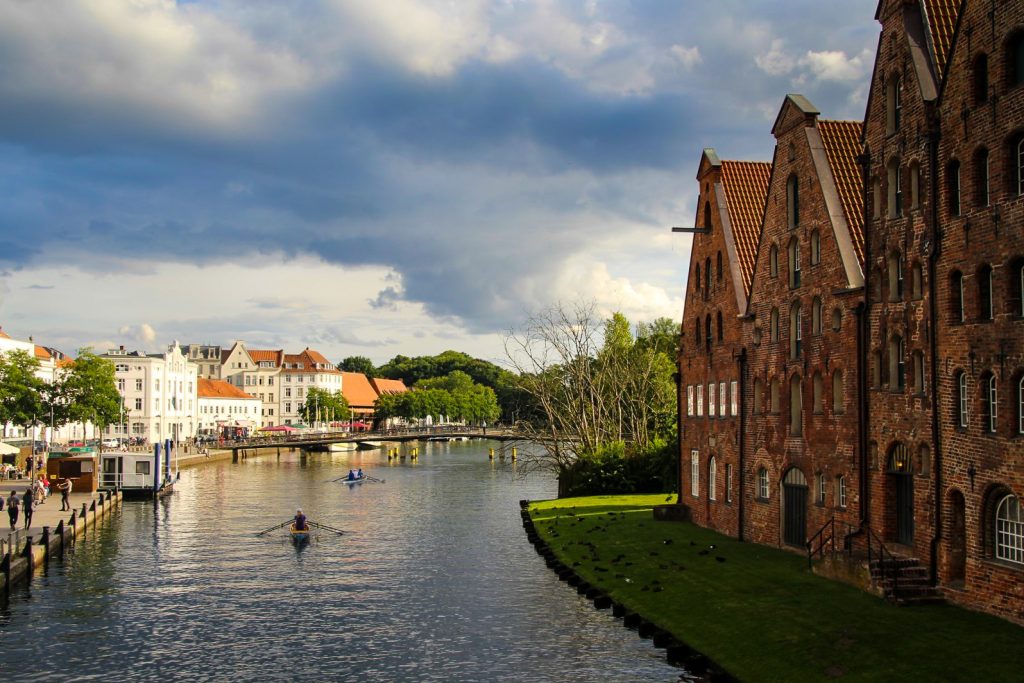

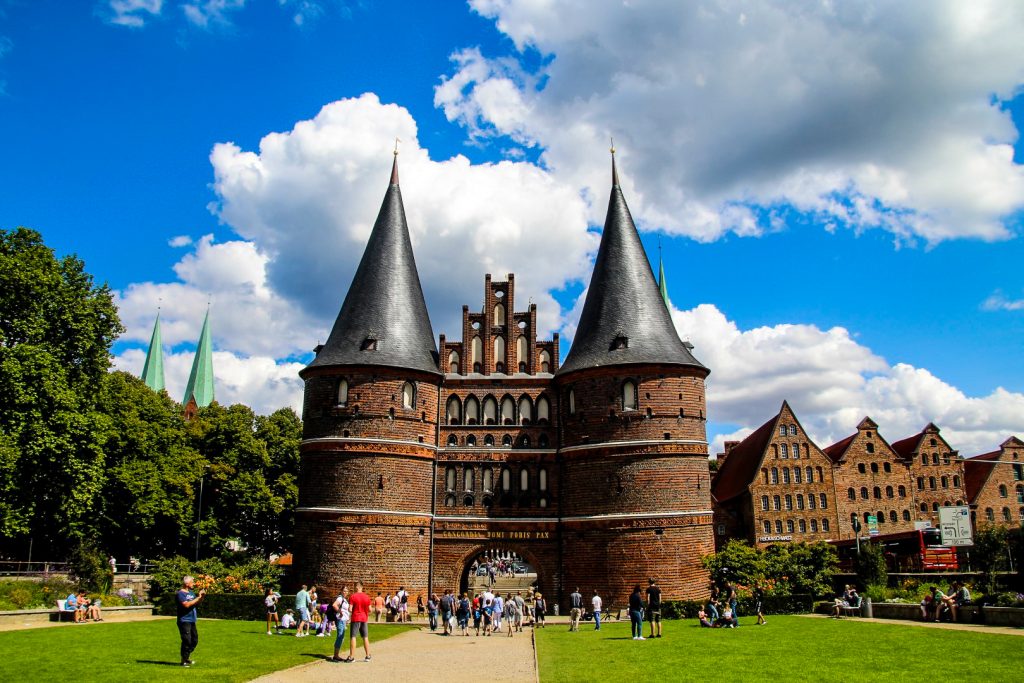
I continued my walk going through the park, Wallanlagen, which surrounds the hilltop, Katzenberg. I was hoping for a good view from the hill but the trees around it blocked the view.
So I continued down to the water to a viewpoint known as Malerwinklen, which translates to “Painter’s corner”. I understood why. It truly is a picturesque angle, one I could imagine painting if I had better skills!
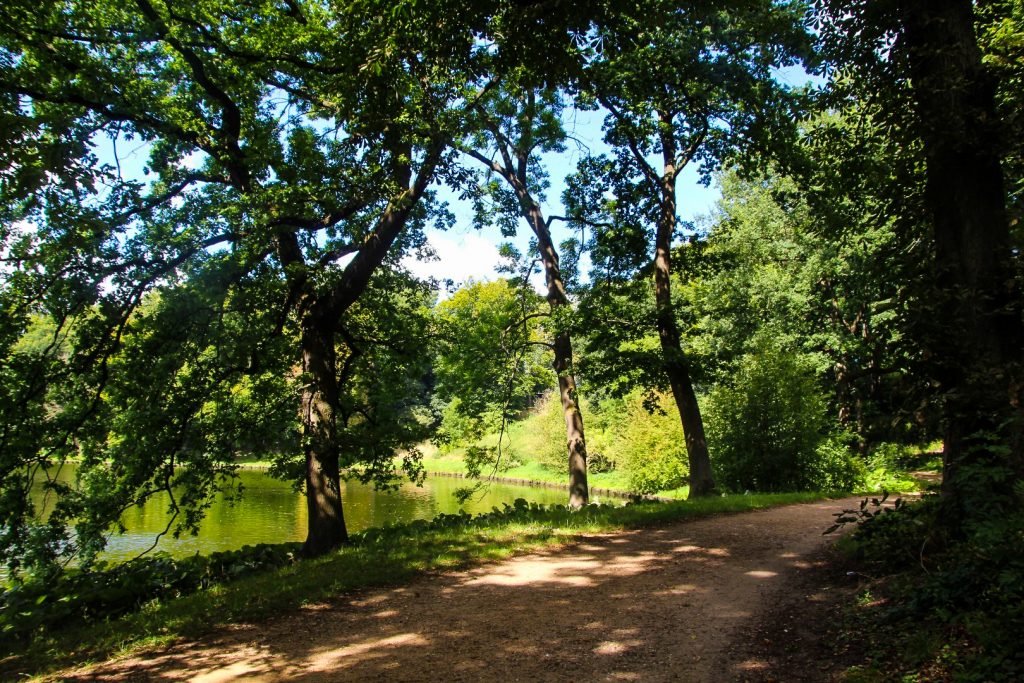

I found my way to Lübeck’s cathedral, which was originally built in the late 12th century, but partly destroyed in a bombing raid during World War II and reconstructed in 1982. It was open and free of charge so I went inside and found myself in awe over the many beautiful details of the interior.
I continued my walk down to the River Trave and wandered along An Der Obertrave, a popular street for summer hangouts and the coziest place in town in my opinion. After a short rest at the hostel, I walked into the very heart of Lübeck, the cozy market square with its late medieval town hall and Marienkirche (St. Mary’s Church), the largest church in the city and the third largest church in Germany!


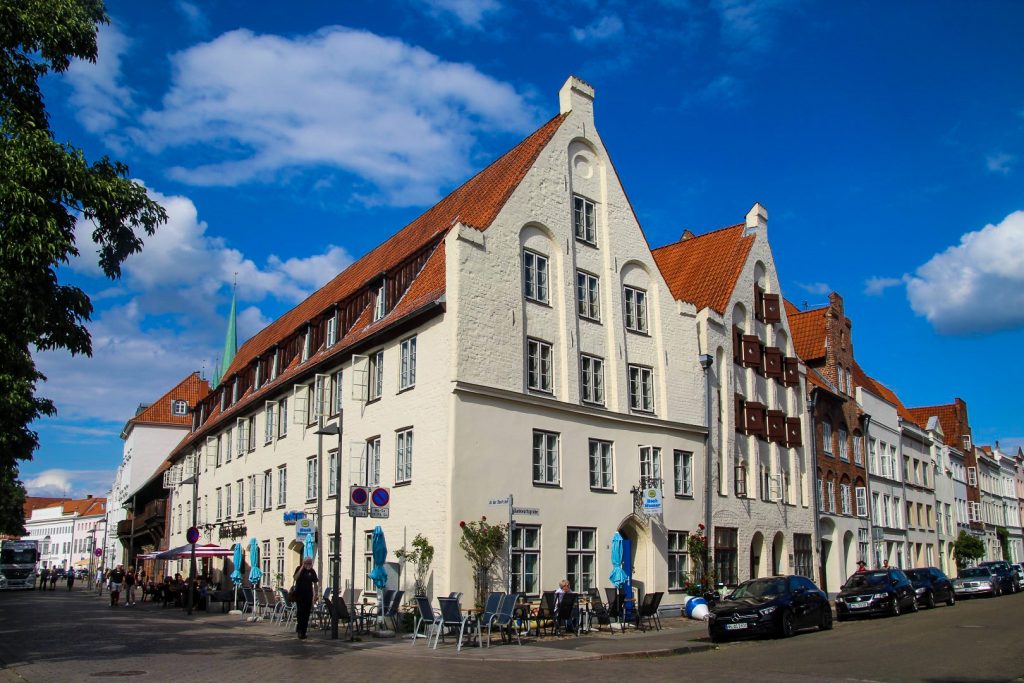
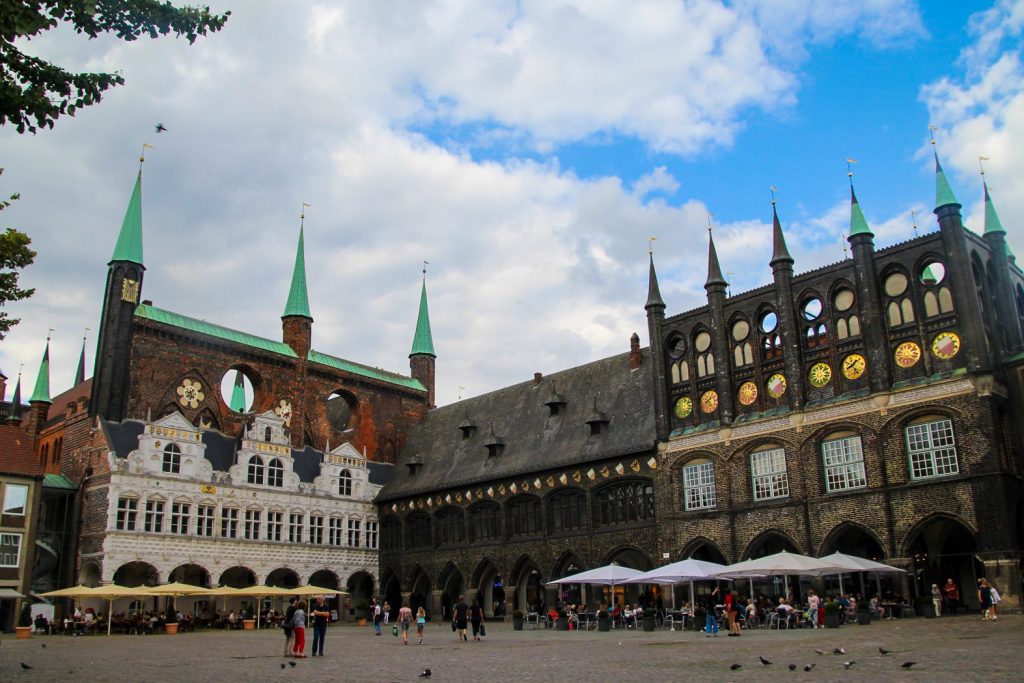
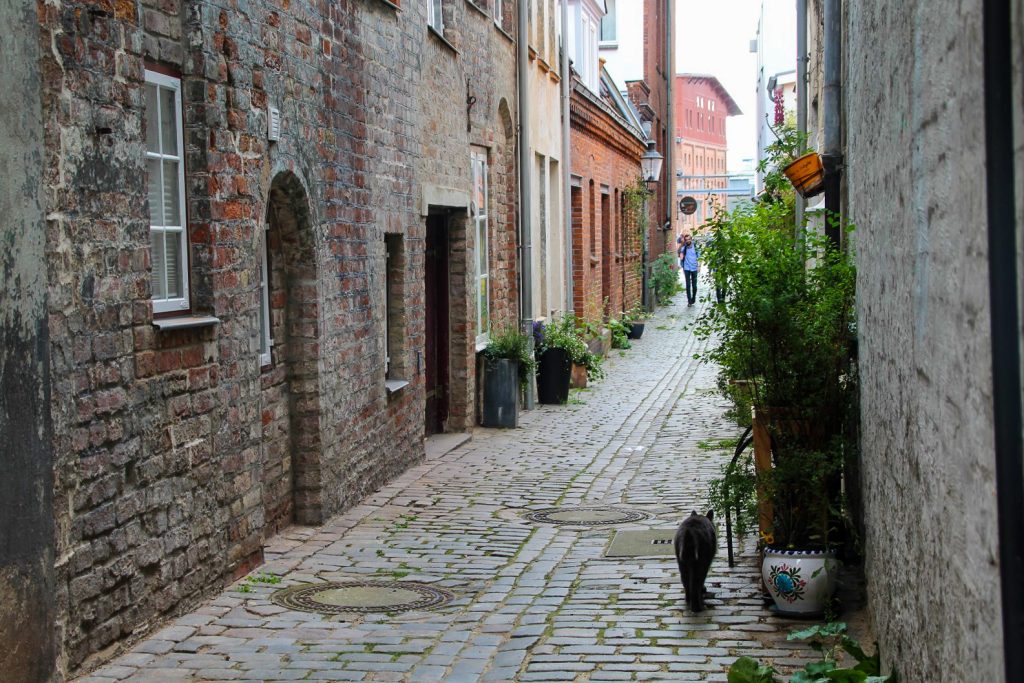
I walked north to the outskirts of Altstadt where I found Burgtog, the other one of the two remaining medieval city gates.
I made my way to Stadtpark, a beautiful large park full of lakes which was the perfect place to end the day, sitting in peace with just the sound of birds while eating my dinner consisting of a salad from Rewe and more crispbread.
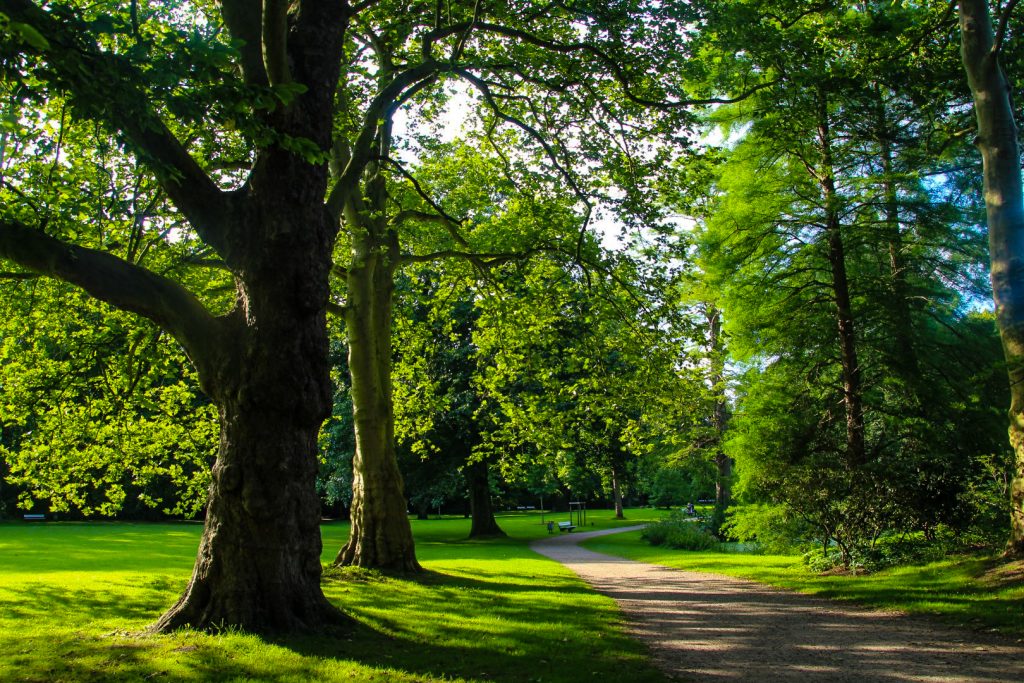

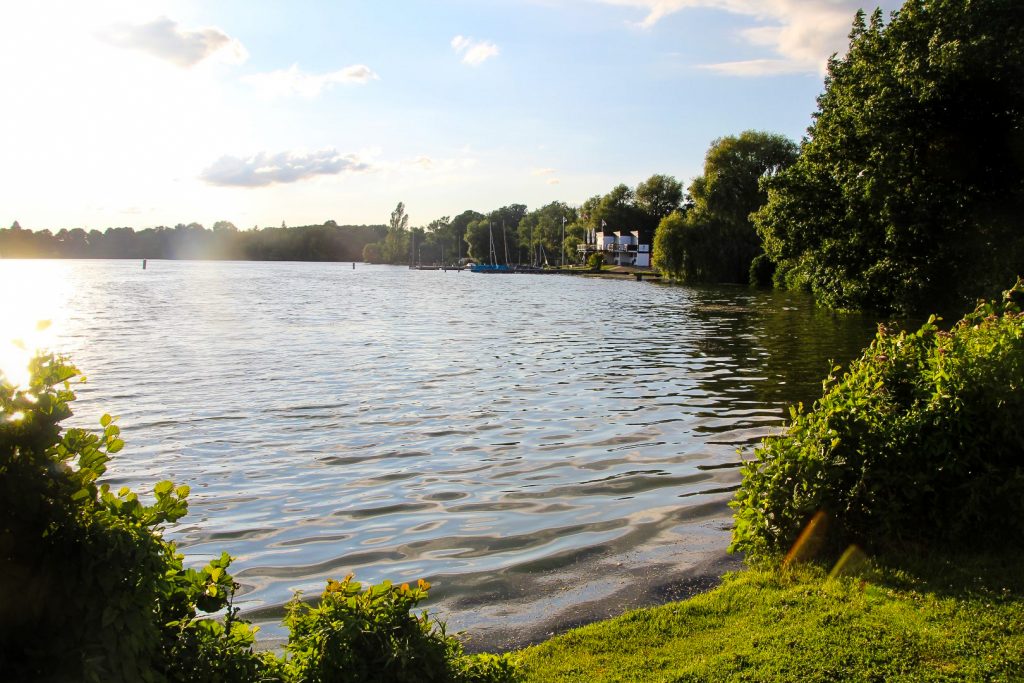

I spent the next day walking around the nearby island of Fehmarn, but the following day was spent entirely in Lübeck. It was crazy hot that day, 31 degrees (!), so I didn’t manage to do much.
I went shopping in Lübeck’s zero waste store, browsed through a second hand store, ate a vegan burger in a small park with a view of Burgtorg and then went to see the Heiligen-Geist-Hospital from 1286, Germany’s oldest hospital.

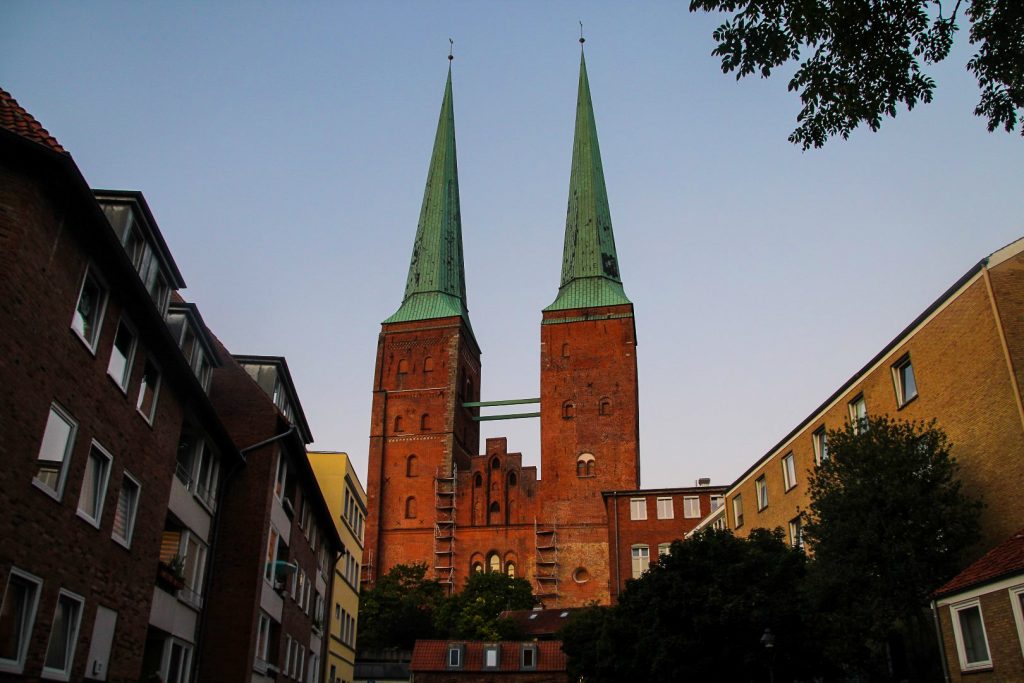
I took another day trip the following day, this time to Wismar and the island of Poel, and then it was time to say goodbye to Lübeck as I headed south to Munich.
Lübeck served as a great base for five days, but I couldn’t have spent all of those five days just in the city. Lübeck’s centre is beautiful and interesting, but it’s small and quickly seen. Outside of the city centre, nothing really caught my interest. I do think that I might’ve felt different about the city if I hadn’t been homesick though. I would like to return to Lübeck one day, especially for the Christmas season. I can’t imagine anything cozier than Christmas markets in Lübeck’s old city centre!
WANT MORE INFO?: Download a city guide for Lübeck with GPSmyCity here!
Leave a Comment
Pingback: Two days in Munich, the capital of Bavaria – Northtrotter on 26/01/2021
Pingback: To the Bavarian Alps: The beginning of an epic roadtrip – Northtrotter on 26/01/2021
Pingback: Fehmarn: Escaping to Germany’s overlooked island – Northtrotter on 26/01/2021
Pingback: My December 2022: A teary goodbye to Lolland and a Christmas at home – Northtrotter on 26/01/2021
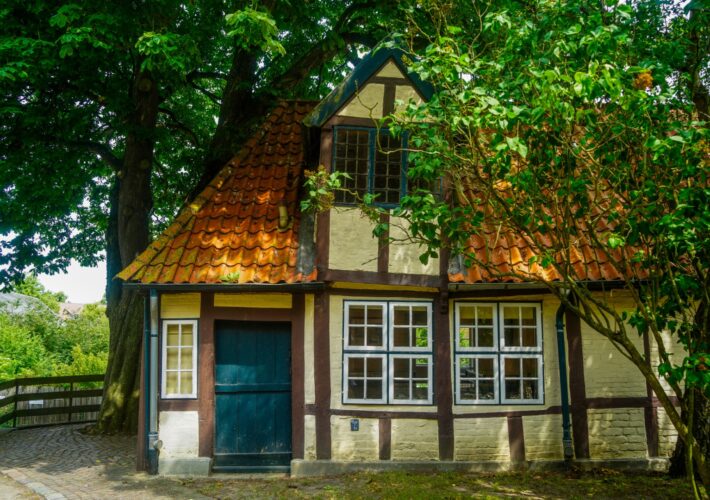
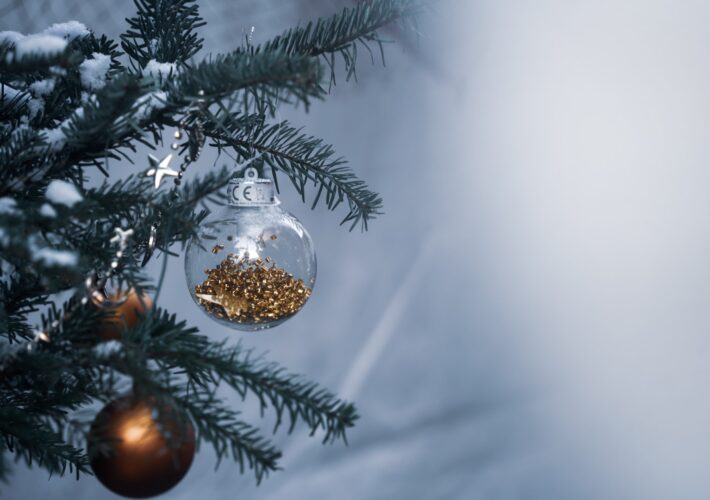
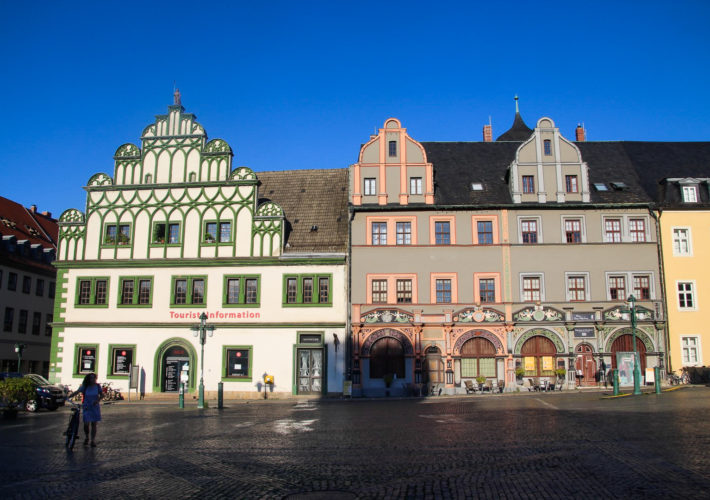

4 COMMENTS